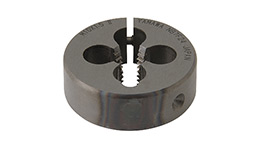
10 月 . 05, 2024 06:56
Back to list
Optimizing Gas Coalescing for Improved Efficiency and Performance in Industrial Applications
The Role of Gas Coalescers in Industrial Applications
Gas coalescers are critical components in various industrial processes, particularly in the oil and gas sector, where the separation of vapor and liquid phases is essential for operational efficiency. These devices function by facilitating the coalescence of small liquid droplets or particles suspended in a gas stream, allowing for the effective removal of impurities and enhancement of gas purity. This article delves into the principles of gas coalescing, its applications, and its benefits.
At its core, a gas coalescer operates on the principle of enhancing droplet size through the collision and merging of small droplets within a gas flow. The instrument typically consists of a filter element, often made of porous materials, designed to capture and coalesce liquid droplets. As the gas passes through, droplets collide and combine, increasing in size until they are heavy enough to be separated from the gas stream by gravitational or inertial forces. This straightforward yet effective mechanism is the foundation for achieving high-quality gas outputs.
Gas coalescers play a crucial role in various applications. In the oil and gas industry, for instance, they are instrumental in separating water and hydrocarbon mixtures, ensuring that only dry gas enters the processing and transportation systems. This not only protects equipment but also optimizes the overall process by preventing corrosion and other detrimental effects caused by contaminants. Additionally, coalescers are employed in natural gas treatment facilities, where they enhance the quality of gas by removing trace water and hydrocarbon liquids, crucial for meeting stringent regulatory standards.
gas coalescer

Moreover, gas coalescers are increasingly utilized in the manufacturing sector
. In operations such as vacuum systems and gas transportation, ensuring the absence of particulates or moisture can significantly impact product quality and system reliability. By incorporating coalescing filters into these systems, manufacturers can maintain the integrity of gases, enhance productivity, and reduce downtime associated with equipment maintenance.The benefits of using gas coalescers extend beyond improved product quality. By efficiently removing liquid contaminants, these devices contribute to energy savings and reduced operational costs. Furthermore, they facilitate compliance with environmental regulations by ensuring that gas emissions are within acceptable limits.
In conclusion, gas coalescers are vital tools in the industrial landscape, particularly within the oil and gas sector. Their ability to improve gas quality by efficiently separating liquid impurities not only enhances operational efficiency but also contributes to the longevity of equipment and compliance with environmental standards. As industries continue to evolve, the demand for effective filtration and separation technologies like gas coalescers is likely to increase, driving innovations and advancements in this essential field. Understanding and leveraging the capabilities of gas coalescers can play a significant role in ensuring the sustainability and efficiency of industrial operations.
Next:
Latest news
-
Unlocking The Quality Gas Pressure ReducersNewsNov.01,2024
-
The Role of Gas Pressure Reducing StationsNewsNov.01,2024
-
The Importance and Functionality of Safety Relief ValvesNewsNov.01,2024
-
The Essential Role of Safety Valves in Natural Gas ApplicationsNewsNov.01,2024
-
The Essential Role of Gas Pressure RegulatorsNewsNov.01,2024
-
Enhance Your Premium Gas FiltersNewsNov.01,2024

